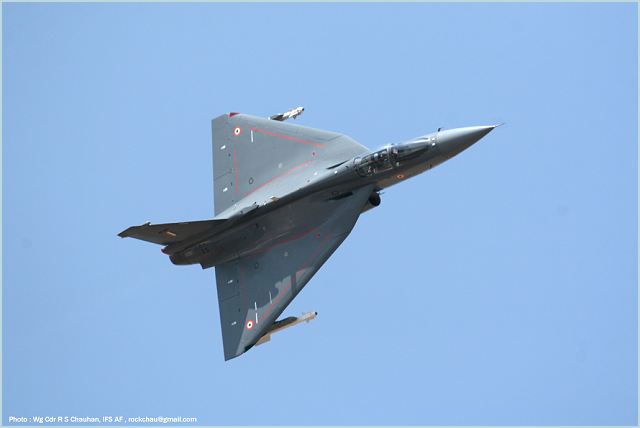Breaking news
Indian Defence Ministry has approved the production of 8 Tejas local-made light combat aircraft 2902121.
| 2012
| a | |||
| |
|||
World
Avaition Industry News - India |
|||
Indian
Defence Ministry has approved the production of 8 Tejas local-made light
combat aircraft. |
|||
In a boost to India's indigenous maritime combat plane development programme, a top defence panel has approved the limited series production of the Tejas light combat aircraft (LCA) for the Indian Navy's under-construction indigenous aircraft carrier (IAC). The defence ministry’s apex Defence Acquisition Council (DAC) sanctioned the building of eight Naval LCA aircraft by Hindustan Aeronautics Limited (HAL). |
|||
 Indian-made Tejas light fighter aircraft during test flight. |
|||
"The
eight fighters will be a mix of single-seat fighters and twin-seat trainers.
The money for these has also been allocated,” says a senior Ministry
of Defence official who was at the DAC meeting. The Naval LCA is a crucial cog in the navy’s expansion and, therefore, in India’s increasingly visible maritime strategy. It is designed to fly from an aircraft carrier, a floating airfield that can project Indian power across the oceans. India has already bought Russian MiG-29K medium fighters to equip the INS Vikramaditya (formerly the Gorshkov) an aircraft carrier acquired from Russia. But another two (and possibly three) indigenous Vikrant-class aircraft carriers being built at Cochin Shipyard Ltd will field the Naval LCA, along with a medium fighter. With the first of these, INS Vikrant, at an advanced stage of construction in Kochi, the navy is keen that development of the Naval LCA proceeds alongside. Earlier this month, the normally soft-spoken navy chief, Admiral Nirmal Verma, publicly criticised the Aeronautical Development Agency (ADA oversees the LCA programme) for placing the Naval LCA programme on the back burner, while focusing on the air force version of the Tejas. The Indian navy and ADA will extensively test the Naval LCA on land before venturing onto an aircraft carrier at sea. A Shore-Based Test Facility (SBTF) has been created in Goa, which replicates the dimensions and conditions of a carrier deck, including the arrestor and gear that brings the aircraft to a quick halt; and the optical landing system that allows the pilot to “aim” his fighter at the arrestor wire spread out on the carrier deck. After extensive SBTF testing, the Naval LCA will face the crucial challenge of landing and taking off from an actual aircraft carrier. |
|||


























